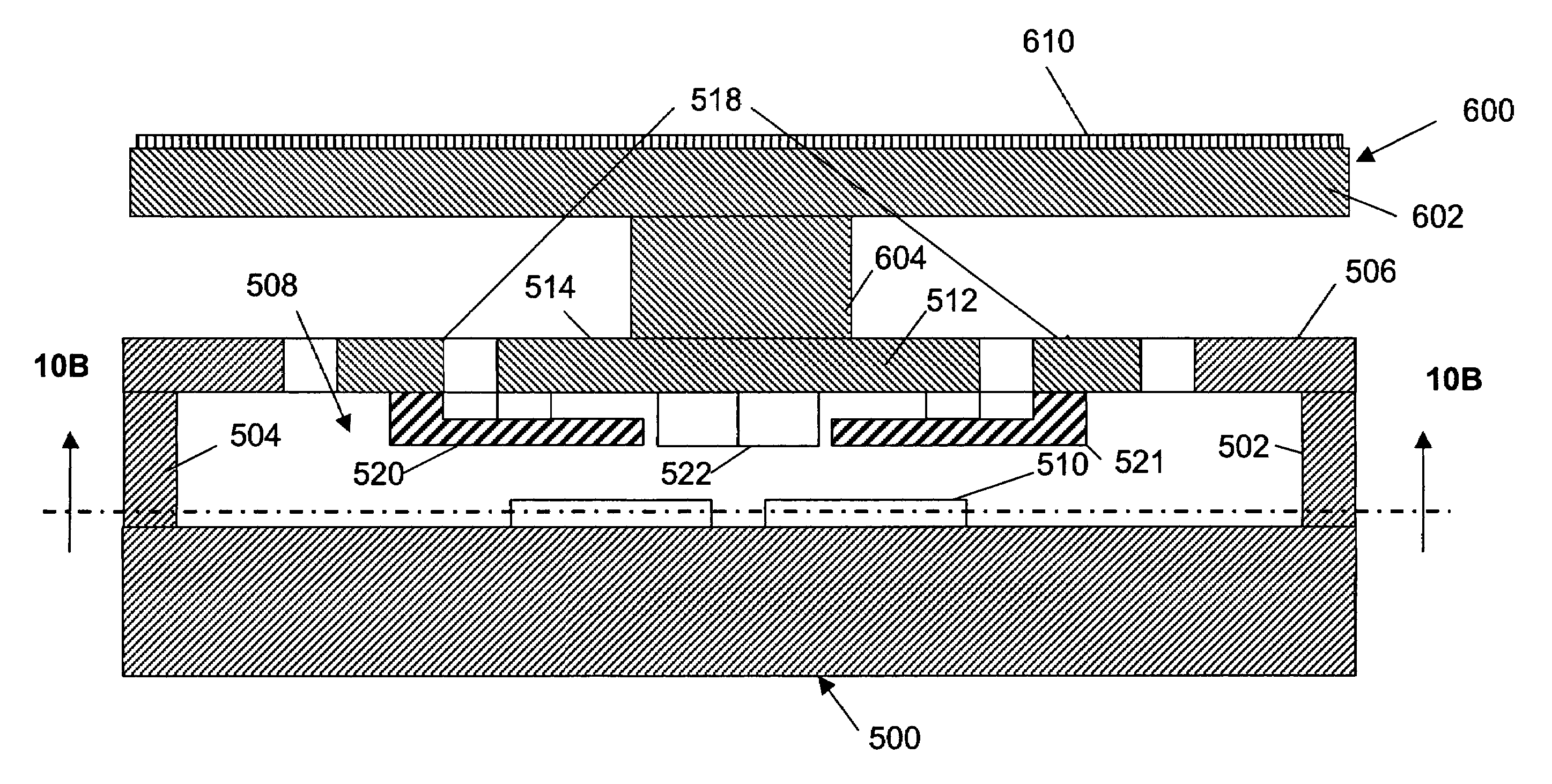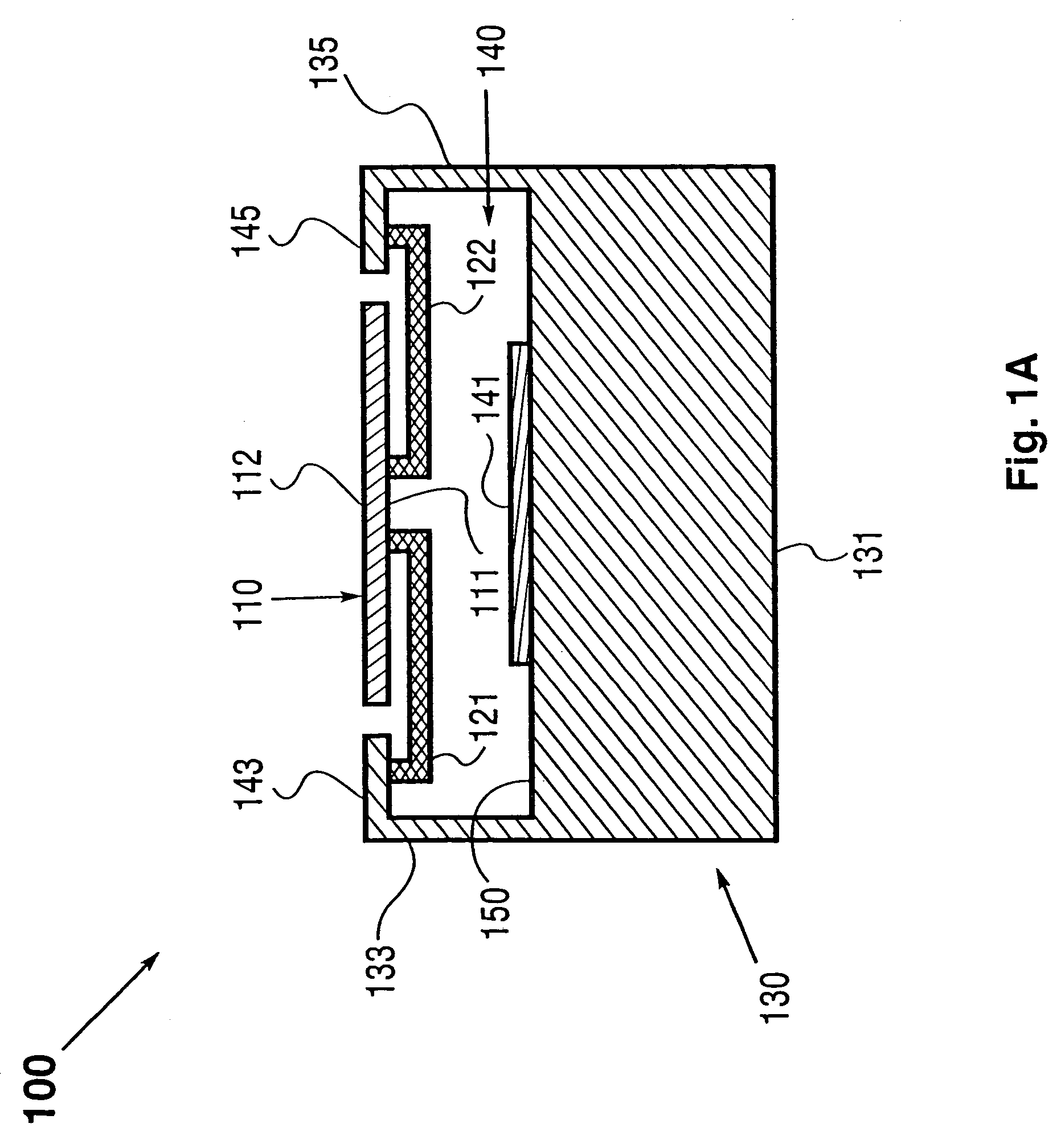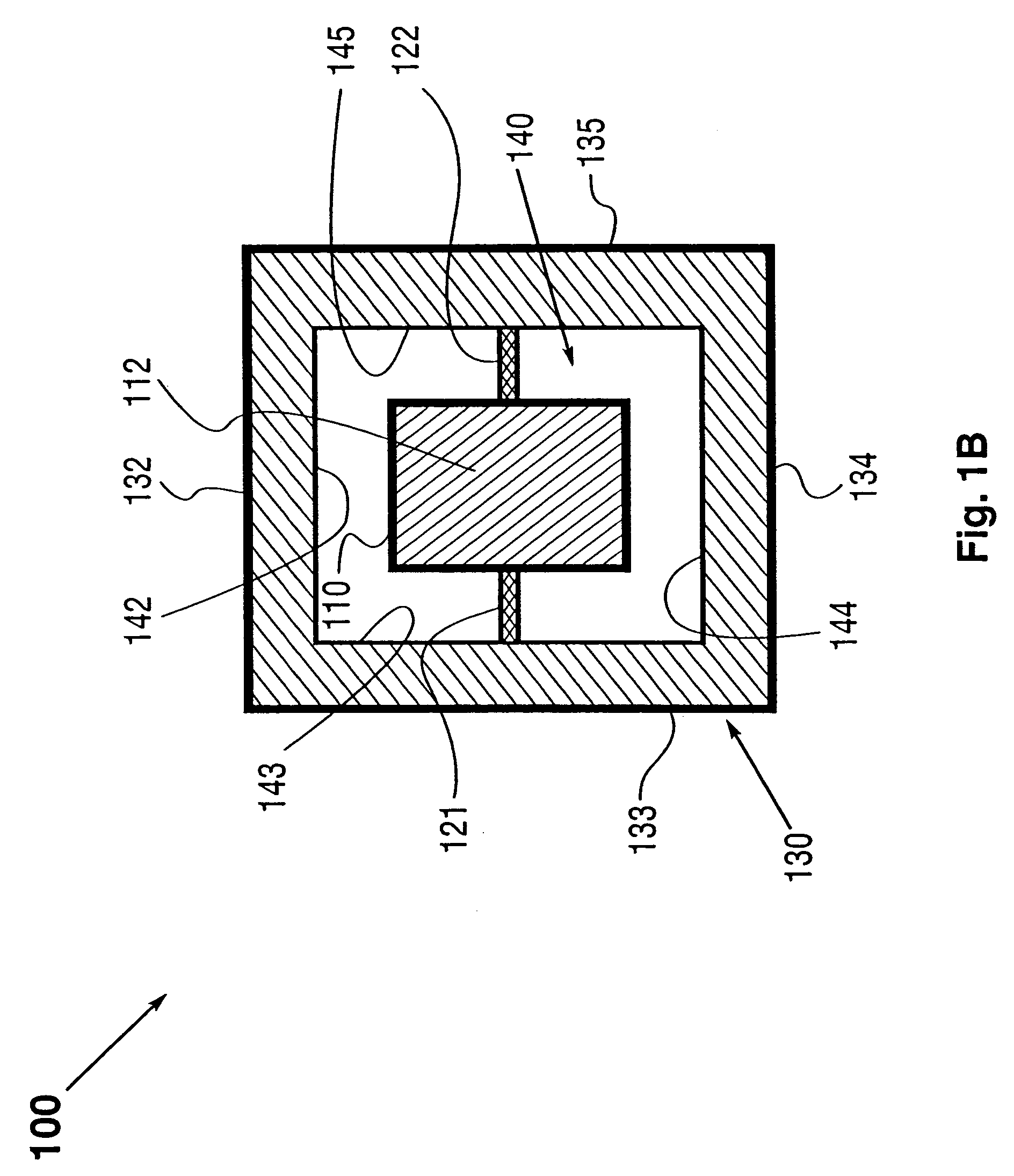High fill-factor bulk silicon mirrors
a bulk silicon mirror and filling factor technology, applied in the field of microelectromechanical systems, can solve the problems of limiting the amount of surface area available for optical beam manipulation, arrays susceptible to misalignment and other undesirable effects, and achieve the effect of high optical fill factor, substantial rotational range, and maximized optical surface area of bulk elements
- Summary
- Abstract
- Description
- Claims
- Application Information
AI Technical Summary
Benefits of technology
Problems solved by technology
Method used
Image
Examples
first embodiment
[0034]FIGS. 1A–1B illustrate a MEMS apparatus 100, according to the invention. FIG. 1A depicts a cross-sectional side view of the MEMS apparatus 100, which may comprise a bulk element 110, first and second hinge elements 121, 122, and a base support 130. The bulk element 110 may have a device (or “top” in the figures) surface 112, which may be substantially planar, and a “bottom” surface 111 that is disposed below the device surface 112 and on an opposite side of the bulk element. The device surface may be an optical surface, as described more fully herein. The first and second hinge elements 121, 122 may be disposed below the device surface 112, as shown. By way of example, in the embodiment of FIG. 1A, the hinge elements 121, 122 may be coupled to the bottom surface 111 of the bulk element 110 and to the base support 130 to attach or couple the bulk element to the base support. In this manner, the bulk element 110 is suspended from the support by the hinge elements 121, 122 with t...
second embodiment
[0038]FIG. 2 shows a cross-sectional side view of a MEMS apparatus in accordance with the invention, which affords a larger device surface area, i.e., higher fill factor, than the embodiment of FIGS. 1A–1B. By way of example, MEMS apparatus 200 may comprise a bulk element 210, first and second hinge elements 221, 222, and a base support 230. The bulk element 210 may include a substantially planar “device” (or “top”) surface 212, and a “bottom” surface 211 which is disposed below and on an opposite side of the bulk element from the device surface 212. In this embodiment, the bulk element 210 may further include a base portion 215, which may extend downward (in the figure) from the bottom surface 211. First and second hinge elements 221, 222 may be each disposed below the device surface 212 and coupled to the base portion or post 215 of the bulk element 110 and to the base support 130. In this manner, the bulk element 210 is suspended from the support with the hinge elements 221, 222 ...
third embodiment
[0041]FIG. 3 shows a cross-sectional side view of a MEMS apparatus 300 in accordance with the invention which also has a higher fill factor than the apparatus of FIGS. 1A–1B. With the exception of a bulk element 310, MEMS apparatus 300 is substantially similar to the MEMS apparatus 200, and may have the general configuration of and similar elements to those of the embodiment shown in FIG. 2. As shown in FIG. 3, the MEMS apparatus 300 may comprise a bulk element 310, first and second hinge elements 321, 322, and a base support 330. The base support 330 may include a cavity 340, which is formed by at least two sidewalls 333, 335 that extend from substrate portion 331. The cavity 340 may include a bottom surface 350, on which at least one electrode 341 may be disposed.
[0042]In the MEMS apparatus 300, the bulk element 310 may include a substantially planar device (or optical) top (in the FIG.) surface 312, and a bottom surface 311 which is disposed below and opposes the device surface 3...
PUM
 Login to View More
Login to View More Abstract
Description
Claims
Application Information
 Login to View More
Login to View More - R&D
- Intellectual Property
- Life Sciences
- Materials
- Tech Scout
- Unparalleled Data Quality
- Higher Quality Content
- 60% Fewer Hallucinations
Browse by: Latest US Patents, China's latest patents, Technical Efficacy Thesaurus, Application Domain, Technology Topic, Popular Technical Reports.
© 2025 PatSnap. All rights reserved.Legal|Privacy policy|Modern Slavery Act Transparency Statement|Sitemap|About US| Contact US: help@patsnap.com



